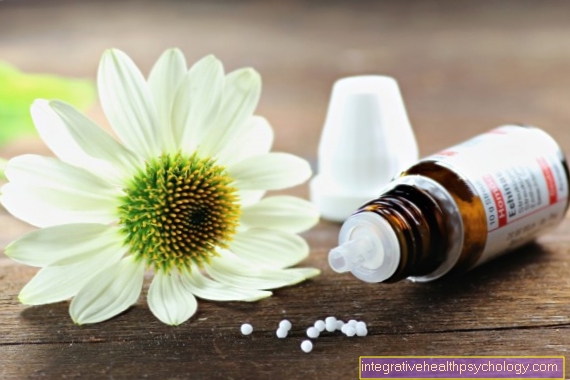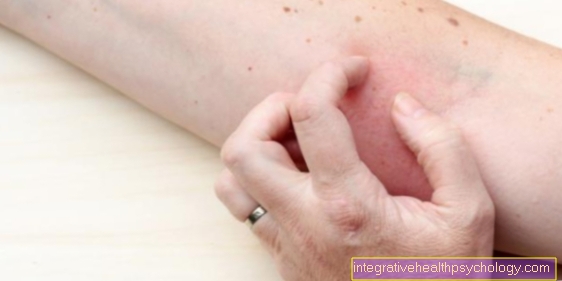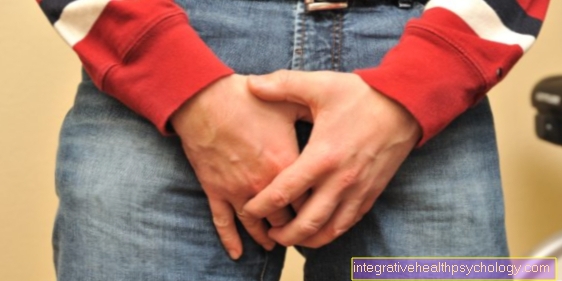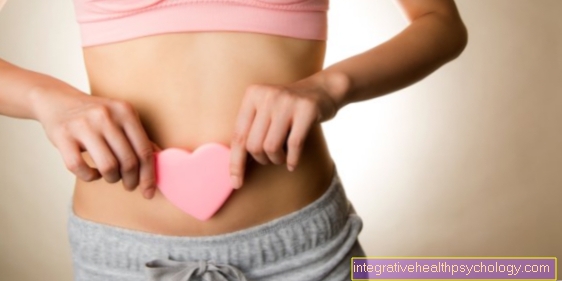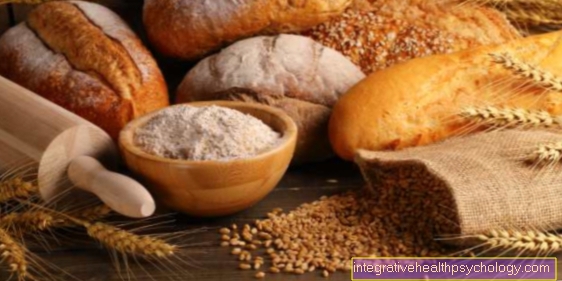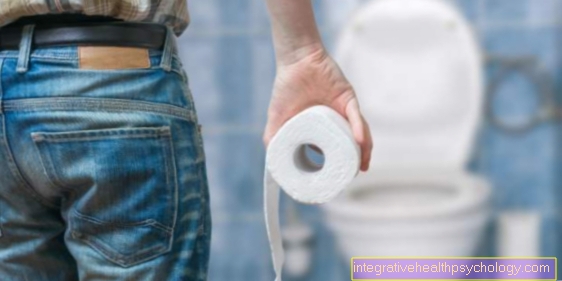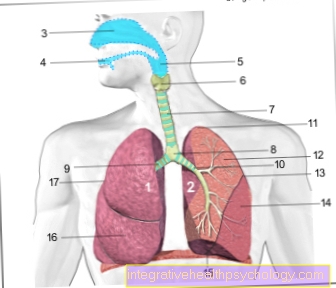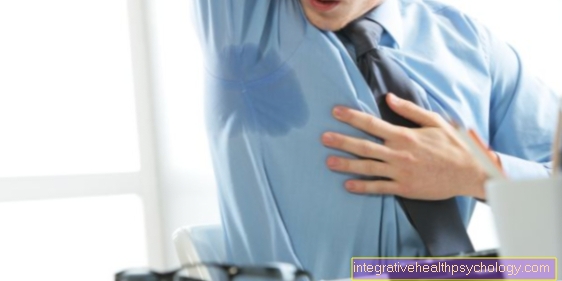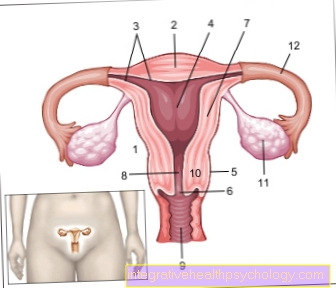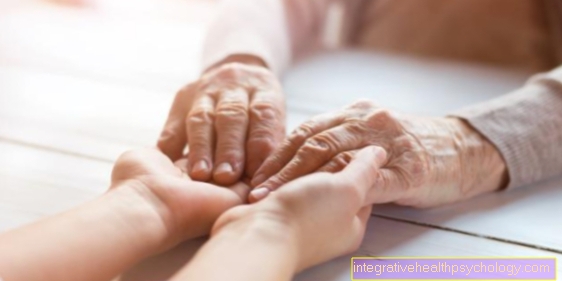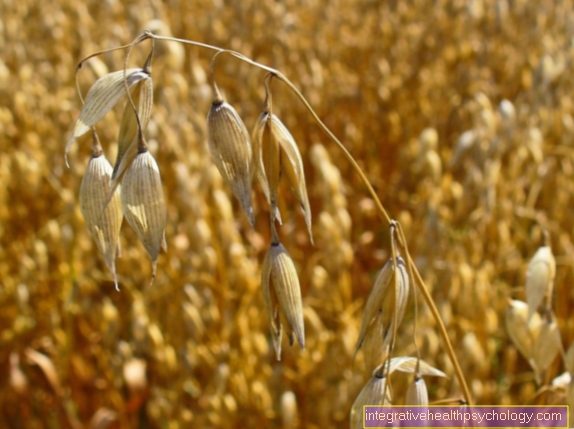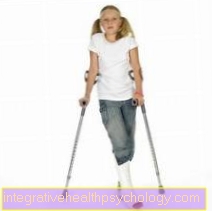Low Blood Pressure and Headaches- You Can Do That!
introduction
Many people suffer from low blood pressure. Symptoms such as headache, dizziness or circulatory problems are the result. Slender people who drink little and do not exercise are particularly affected.
Low blood pressure can be brought into the normal range by various measures and thus the symptoms that are associated with low blood pressure can be combated. If the measures to normalize blood pressure are carried out permanently, there is a high possibility that the blood pressure will also remain in the normal range permanently.
Also read the article on the topic: What to do if you have low blood pressure
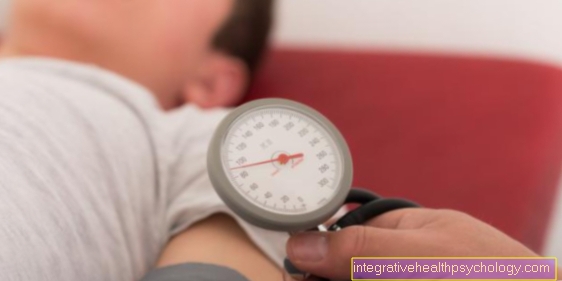
Why does low blood pressure cause headaches?
Low blood pressure can cause sharp or pulsating headaches. The reason for the headache is the poor supply of oxygen to the brain when the blood pressure is too low. The blood vessels in the brain expand when the blood pressure is low, and when the blood pressure is high, the blood vessels constrict. This effect has the effect that the blood flow can be maintained within a certain range.
However, this mechanism is only effective when the systolic blood pressure is between 100 and 200 mmHg. If the blood pressure falls below this threshold, the blood flow decreases and headaches occur. The blood circulation in the head has a special position because the blood has to be pumped against gravity. The effects of low blood pressure are therefore first noticeable through symptoms that are triggered by an insufficient supply of the brain.
Also read the article on the topic: When does low blood pressure become dangerous?
Which accompanying symptoms often occur?
Other symptoms include dizziness, loss of consciousness, blurred vision, nausea, and fatigue. The symptoms are mainly caused by an insufficient supply of the brain. The brain is very sensitive to an undersupply of oxygen. The symptoms that result from the undersupply, all cause that there is a desire to bring the body into a horizontal position. The recumbent position improves blood flow to the brain and symptoms gradually go away.
If the undersupply reaches a critical level, it leads to fainting. The person concerned is thus forced into a lying position. Usually the person will regain consciousness.
For more information, see: Symptoms of low blood pressure
dizziness
Low blood pressure can lead to dizziness due to an insufficient supply of oxygen to the brain. Dizziness is caused by the balance organs of the central nervous system and means that information about the current position and movement of the body is not correctly processed. For example, in the equilibrium organs, which roughly consist of the cerebellum and the inner ear, the signal is processed that we are turning in circles. This automatically tenses the muscles that keep us from falling.
Dizziness signals that something is wrong and makes you want to sit down or lie down.The dizziness is a protective mechanism of the body so that the brain can again be supplied with better blood and more oxygen. However, dizziness can also be a symptom of a more serious illness, such as a stroke, and should definitely be checked by a doctor if it does not subside or if it is very severe.
Read more on the topic: Dizziness from low blood pressure
nausea
Nausea is a symptom that is common with low blood pressure. This nausea can have several causes. The body tries to counteract the low blood pressure, which happens by increasing the release of adrenaline. The effects of adrenaline are varied. One of the effects is an inhibition of the movements of the gastrointestinal tract, also called motility. This reduced motility leads to digestive disorders and, under certain circumstances, nausea.
Another reason for the nausea is again the insufficient supply of the brain. On the one hand, the nausea can be triggered by the dizziness already mentioned, on the other hand there is another structure in the brain that reacts to an undersupply. This structure is called the vomiting center or area postrema. Vomiting is triggered at this structure, which is located in the brain stem. An undersupply can also lead to irritation and thus vomiting.
For more information, see: Low blood pressure and nausea- you can do that
fatigue
In some people, low blood pressure primarily leads to tiredness, fatigue and lack of drive. The rapid fatigue is caused by the insufficient blood supply. Any exertion, be it just a normal daily routine, is less tolerated. The body needs more regeneration phases in order to maintain the bodily functions.
Persistent tiredness can also be a sign of other illnesses. The cause of permanent fatigue should be clarified by a doctor. Classically, the combination of fatigue and low blood pressure could also be an indication of an underactive thyroid.
What can I do about low blood pressure and headaches?
You don't necessarily have to do anything about low blood pressure because it is not dangerous per se. However, if accompanying symptoms occur more often, one should try to stabilize the circulation with general measures. This includes a healthy, balanced diet and adequate fluid intake. It is also important to exercise regularly to strengthen the cardiovascular system.
Normally, these measures should cause the blood pressure to rise a little, which means that the headache will also go away. However, if the general measures are inadequate, attempts can be made to raise blood pressure with medication.
Medication
Medication to raise blood pressure is only used when low blood pressure is associated with typical symptoms. Low blood pressure in itself has no disease value and, in contrast to high blood pressure, does not need to be treated. So-called sympathomimetics are mainly used to treat low blood pressure. These drugs work on the same receptors as adrenaline. They thus cause a good increase in blood pressure.
However, these drugs also have side effects and should only be used after carefully weighing the benefits and risks. In addition, some herbal medicines are effective in treating low blood pressure. Camphor should be mentioned here primarily, but there are also other herbal medicines that can raise blood pressure.
Home remedies
Probably the best known home remedy for low blood pressure is caffeine. Drinks containing caffeine can be enough by themselves to raise blood pressure that is too low. It is also important that enough water is absorbed to increase blood volume. Nor should you do without table salt or follow a low-salt diet, as table salt leads to an increase in blood pressure. This increase is the result of the fact that water is increasingly drawn into the vessels osmotically.
Measures that push the blood out of your legs can be very helpful. If leg veins are too large in diameter or if the venous valves no longer close, the blood sinks into the legs. It can therefore help to wrap the legs or use support stockings and thus compress the veins from the outside.
Furthermore, alternating baths, steam baths or saunas can help to strengthen the blood vessels in their ability to regulate. The ability to constrict the vessels is improved and thus the blood pressure rises.
homeopathy
If general measures are not enough to raise blood pressure, the circulation can also be stimulated by homeopathic remedies. Various preparations are available that are used depending on the accompanying symptoms and the triggering situation. It is advisable to seek advice from an experienced homeopath in order to obtain the right remedy for the respective situation.
As a rule, however, the general measures are sufficient to stabilize the circulation. If this is not the case, and the symptoms are very severe, a doctor may need to be consulted and drug treatment considered.


